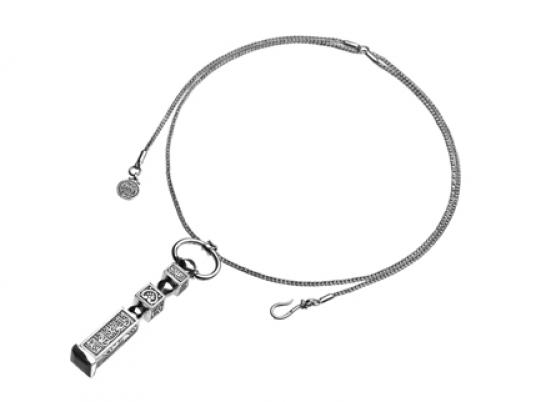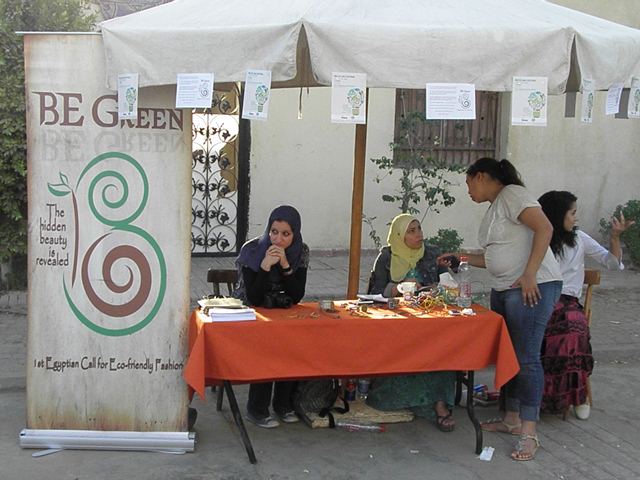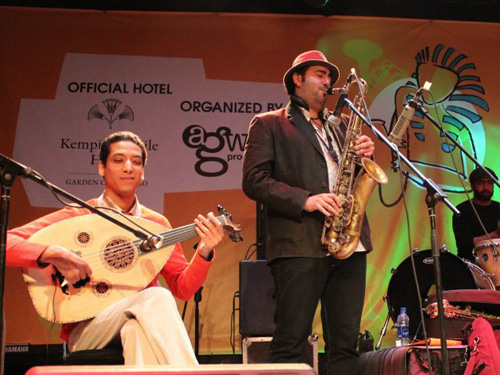The contemporary arts center Darb 1718 played host on Wednesday night to a panel discussion on the work of documenting the events of the recent Egyptian revolution, inviting creative individuals to describe their output so far and predict the way forward.
The discussion, titled “Documenting the Revolution: What Next?" was organized in coordination with the Cultural Affairs Section of the United States Embassy, and attracted a lively mix of people to the panel, each of whom had some revolution-related project to share with the audience.
Among the panelists were filmmaker Hala Galal, multimedia journalist Lauren Bohn, photographer and graduate student at American University of Cairo (AUC) Sobelo Narasimhan, and Ramy Nagy, the founder of Beena Project, a website featuring social entrepreneurial projects.
US Embassy Assistant Press Attaché David Linfield said of the selection of the panel, “They were the first people to come to our minds when we thought of visual arts and the revolution.”
The panelists presented their work documenting the revolution, both during and after the 18-day uprising that ousted former President Hosni Mubarak. But in retrospect, the title of the discussion may have been somewhat misleading as most of the emphasis was on what had already been done rather than what would come next.
Narasimhan and Bohn shared straightforward documentary work that they produced in and around Tahrir Square.
Narasimhan is a graduate student in International Policy at New York University who is living in Cairo to pursue graduate migration and refugee studies at AUC. She showed a series of photographs, primarily portraits from Tahrir Square, as she discussed the utopian feeling in the square at the time.
“Tahrir was a temporal, fully-functioning community, built on self-expression and self-reliance,” she said.
Bohn screened a 15-minute film, comprised largely of interviews with Egyptian writers, politicians, journalists, and others, who spoke about how they felt during the revolution.
By contrast, the projects of Nagy and Galal were collaborative and ongoing. Nagy’s Beena Project is a web platform that promotes a variety of collaborative projects, most of which employ social networking tools. Nagy founded Beena Project during the revolution as a way to prop up fledgling initiatives.
“I had this feeling in my stomach that with all of this politics going on, projects are not going to get the support they need,” he said.
Galal was the only presenter to speak in Arabic (there were no translators), and she talked about the documentary film she is working on, which concerns both the events of the revolution and the artistic creativity that those events generated and continue to generate.
Though all of the panelists produced impressive work, the question-and-answer session revealed dissatisfaction on the part of the audience. Two questioners in a row asked the panelists to fulfill the promise of the event’s title, and talk not just about what they had done, but the more difficult question of what comes next.
But the panelists were short on answers. They emphasized that documentation itself is important, and that discussing it in panels like this is a productive step forward.
“The documenting of brave things like this is important for the next generation,” said Galal.
Still, there was a clear desire within audience for some concrete ideas for the future. The second questioner demanded, “We want practical steps to rebuild Egypt!”
As a foreign journalist herself, Bohn expressed a hope that journalists would stay on in Egypt and “stick to Egypt as a story.”
Nagy recognized the difficulty of outlining such practical steps.
“We are all skeptical," he said. "What is the grand plan? What is the big idea? Even in the 18 days we asked these questions. But it just happened. You have to plug yourself in and be part of what is going on.”
The discussion was in part organized by the Egypt State Alumni Association and three of the panelists were alumni of US State Department programs. Lauren Bohn is a 2010-2011 Fulbright fellow in Egypt, Ramy Nagy is an alumnus of Seeds of Peace, a leadership program for youth from regions of conflict, while Hala Galal participated in the US Embassy’s International Visitor Leadership Program.
Organizer Maryam Saifee, of the embassy’s Alumni Engagement Initiative, closed the event by expressing the hope that the event itself could be seen as a practical step.
“I hope this panel is the beginning of more conversations and collaborations. That was the idea," she said.




